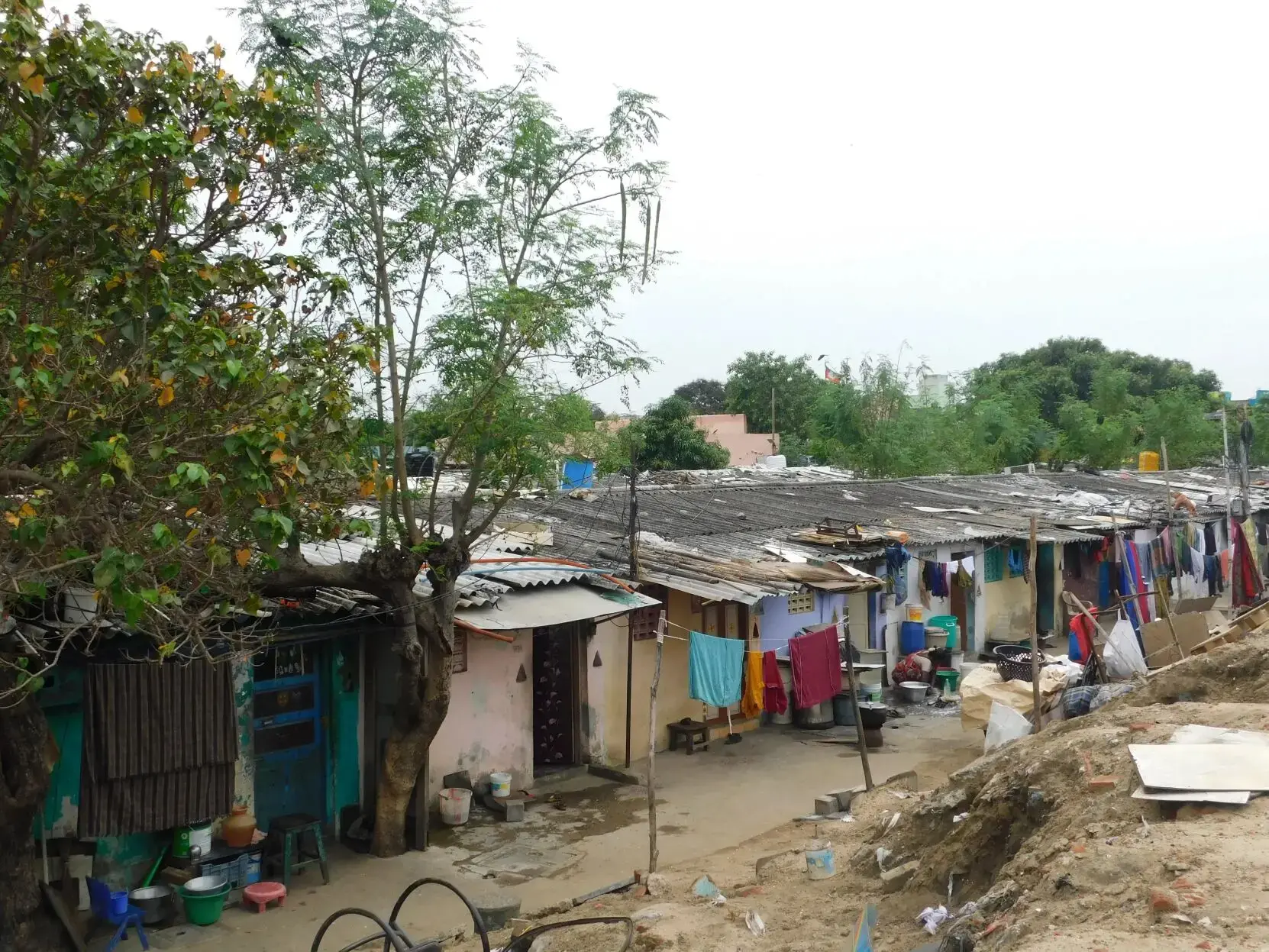
Listen to this story here.
America is running out of water.
In 2021, the Environmental Protection Agency (EPA) water conservation report determined that the U.S. population has doubled over the past 50 years, while its thirst has tripled. The report pushed the U.S. Government Accountability Office’s predictions back one year, anticipating that at least 40 states will experience water shortages by 2024.
Now is a critical time to study other countries’ approaches to water crises. Chennai, India, is known for its innovative approach, and I traveled there to get a closer look.

As a nonprofit journalism organization, we depend on your support to fund more than 170 reporting projects every year on critical global and local issues. Donate any amount today to become a Pulitzer Center Champion and receive exclusive benefits!
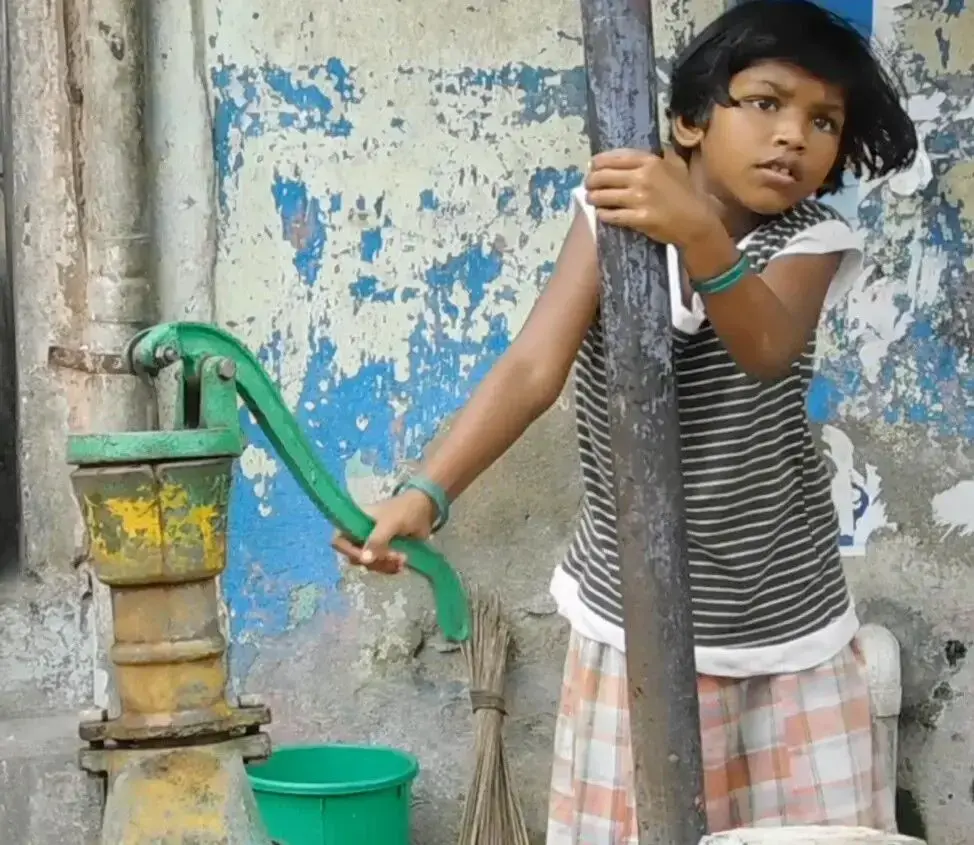
South Indian Solutions
The city of Chennai, known as the Gateway to South India, is breaking ground on green metropolitan infrastructure to save its natural water sources. The metropolis of 11 million inhabitants survived June 19, 2019, dubbed “Day Zero.” On that day, the 11.2 million people of Chennai went without drinking water. They have been determined to avoid another catastrophe ever since.
Most Chenaiites rely on the Chennai Metropolitan Water Supply and Sewage Board (CMWSSB) for fresh tap water and sewage services, with the additional option to order water tankers, which deliver jugs of water at a fixed rate. Many rely on bottled water, which costs about 30 rupees – 38 cents – per gallon, from CMWSSB as well.
A water disaster is labeled Day Zero when a local water municipality, in this case the CMWSSB, runs out of water to supply to its consumers.
“During Day Zero, the state could not supply, so then they started rationing water at 20 liters per day,” Sekhar Raghavan, Director of the Akash Ganga Trust Rain Center in Chennai, told me. “2019 was a very bad year for us. The state would not supply water, people ran out of ground water.”
While a failed monsoon is sure to cause struggles in the following year, harvesting most of the rain would have given Chennai residents more to ration leading up to Day Zero.
Chennai-based innovators, like the City of 1,000 Tanks consortium and the Akash Ganga Trust Rain Center, are building new and sustainable wastewater and rainwater treatment methods that will preserve the resource and prevent flooding rather than pushing the water out to sea.
City of 1,000 Tanks is nearly complete with the pilot project for its new water balance model in Chennai through a network of nature-based solutions, including rainwater harvesting (RWH), vegetation ditches and anaerobic treatment.
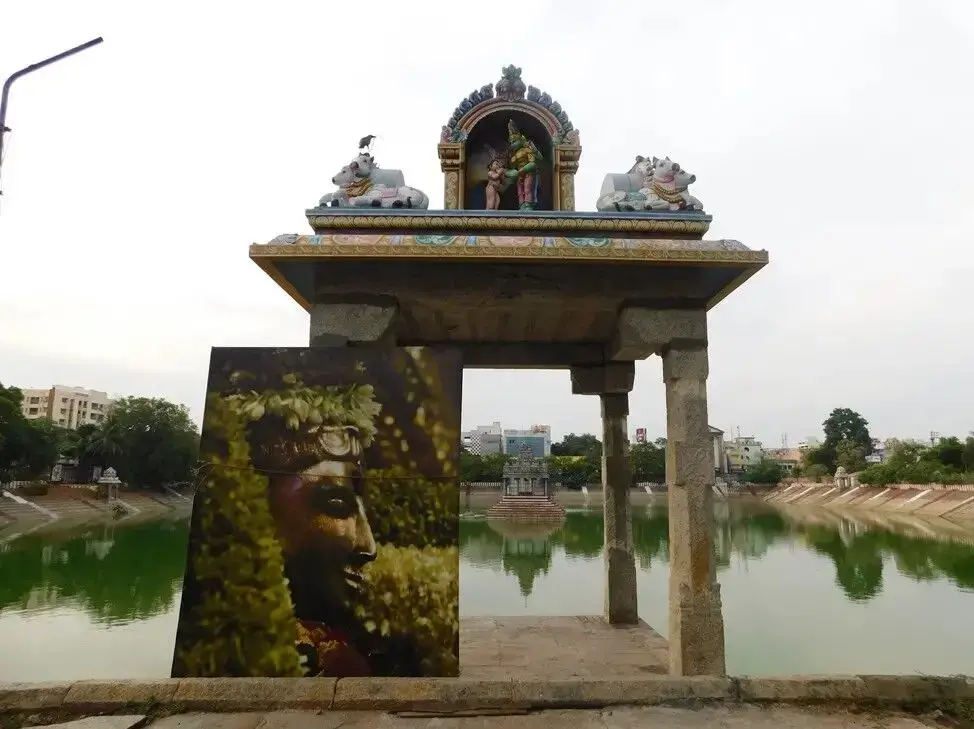
Slum Water
A young girl standing in the middle of the S.M. Nagar neighborhood caught my attention. Ten-year-old Vaishnavi was holding a baby on her tiny hip. She usually goes to school for her midday meal because her family does not have enough food at home; but that day since her mother needed her to help with house chores, she went on an empty stomach. Once the baby was fed, Vaishnavi made her way over to the bore water pump she shares with three of her neighbors and pumped water from the well positioned under the dirt road, into a bucket large enough to hold her entire body. I watched the sweat roll down her forehead as she pumped the outdoor community faucet with one hand.
The water, known as bore water, is for cleaning clothing and dishes rather than drinking. She lifted the bucket with both hands, positioned it behind her head, and made her way down the street to bring it to her mother.
The Sathya Vani Muthu Nagar community of nearly 2,000 residents is located underneath the Park Town Flyover Bridge in the Park Town locality of Chennai. Auto rickshaws line the streets as their drivers rest inside the homes where they are parked or catch up on sleep in the backseat of their own ride.
While some middle schoolers marched down the S.M. Nagar slum streets with perfectly quaffed hair and neat uniforms, others approached the single rusted metal pipe at the front of the neighborhood to pump water for their entire families—a bicep-building and back-breaking task. It could have been the only drinkable tap water they would get until a CMWSSB truck delivered more in two to three days.
“One day water will come and one day it won’t,” said Bernie, a S.M. Nagar resident for more than 25 years. “Mornings at about 5 a.m., it will start and it will go on until about 10 a.m. We, ourselves, don’t know the time. We have to wait in the queue to get water and one person can catch two cans of water at a time.”
While access to clean water is not available on a daily basis, this availability is an improvement from the slum’s struggle on Day Zero and in the following months in 2019, when the tap for drinking water only ran for one hour every few days, leaving many in the community thirsty.

Chennai’s Water Pioneers
Nearly 50 years ago, Raghavan walked from door to door of the apartment complex near his house offering to install RWH systems in people’s homes for little to no cost. He lobbied politicians and community organizers to establish policies that required homes and buildings to have sustainable systems. As a lifelong Chennai resident, he is an expert in sustainable solutions to climate change that are designed to thrive in urban environments.
In 2002, Raghavan founded the Akash Ganga Trust Rain Center as a resource for residents, landlords, corporations and anyone else in India to learn about the benefits and implementation of RWH and ecological sanitation.
Day Zero in 2019 was not the result of climate change alone, but it also presented the issue of government dependency on natural resources. When CMWSSB has enough water to supply the city in abundance, residents are less likely to tap into their personal water sources, often located right beneath their homes, complexes, or neighborhoods.
As a lifelong resident of the city, Raghavan understands that city dwellers are reluctant to sacrifice an abundant and accessible lifestyle for a sustainable lifestyle has adapted his theories and practices with consideration. Although the benefits are not immediately visible, RWH prevents future droughts.
“In 2019, I received 15 to 20 phone calls per day—my phone wouldn’t stop ringing day and night,” Raghavan said. “They realized then that harvesting is the solution. At that time, harvesting became very popular; but once the state supply is good, back to square one.”
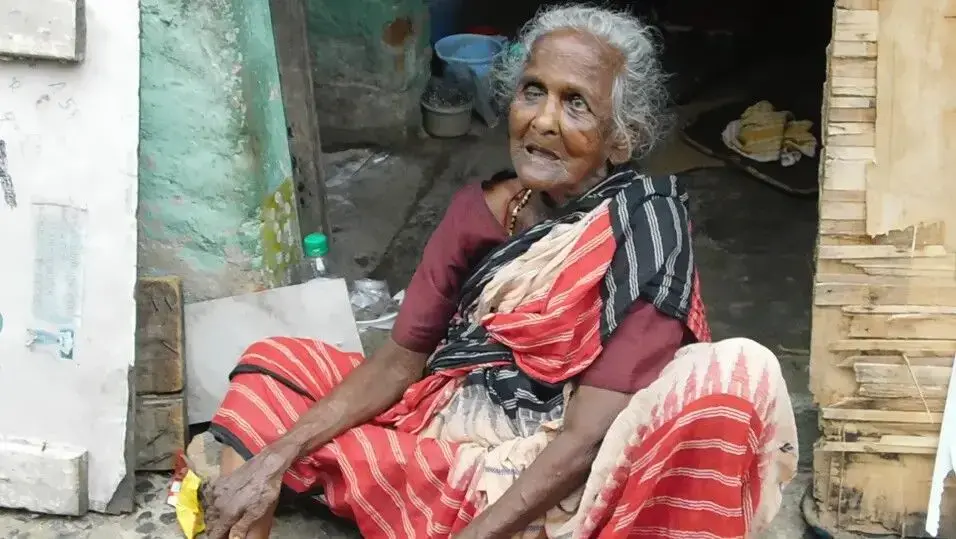
Dutch Funding Goes a Long Way
City of 1,000 Tanks is a consortium of local non-profit organizations, resident stakeholders, urban designers and architects, sustainability experts along with OOZE architects based in the Netherlands. In Chennai, the consortium is hard at work developing an innovative take on a self-sustaining water balance model. I was able to visit the two of the sites for the four major projects that had been approved for construction. OOZE and City of 1,000 Tanks have a common goal of using the city’s natural environment to conduct the solution to Chennai’s water problems.
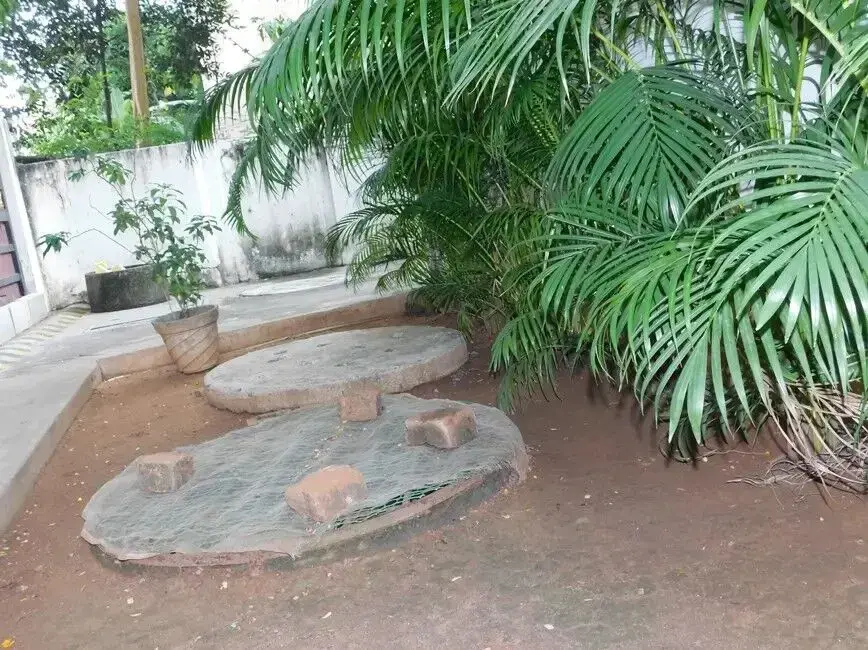
Nature-Based Solutions in Action
The Little Flower Matriculation Higher Secondary School serves visually and hearing-impaired students and is also the location for the first City of 1,000 Tanks flagship project in the T. Nagar locality of Chennai. The school is also a safe haven community for students and faculty during school hours, while the campus houses 30 families, teachers and elders living on the grounds full-time.
Archana Y and Sudhee NK, architects at Chennai-based firm Madras Terrace who prefer to use their initials, are spearheading the project. Once complete, the new water system will treat and repurpose 25,000 liters of water per day and be completely integrated into school land.
The new system will direct rain and formerly-flood water into a settler to separate solid waste. In the second stage of treatment, the water travels from the settler to an anaerobic tank, one without any oxygen inside, that removes any remaining solid waste by carrying the water through chambers coated in activated sludge, a natural sediment to break down impurities. These initial treatment stages are entirely underground in the area between the school buildings.
Once the water passes through the anaerobic tank, it still contains nitrogen, phosphorus and potassium, or NPK, which acts as plant food.
With a series of underground pipes, the NPK water then passes through the constructed wetlands, two gardens with native plants that thrive in wet environments, positioned 10 feet away from the tank. The plants drink the NPK from the water, leaving it nearly pure by the time it flows through each garden. The plant water performs another round of treatment by removing the NPK before the water sinks back down to the aquifer, making it clean enough to use as bore water.
The final step after using the bore water is its natural journey back to the underground aquifer, which is now being recharged with sewage, runoff and rain water rather than being wasted.
Through this pilot program, City of 1,000 Tanks is looking to achieve a closed-loop water system that will make Little Flower a self-sustaining property in the decades to come.
Over the next year, the water will flow from the constructed wetlands to a storage tank for quality testing. The City of 1,000 Tanks team is aiming to achieve the international quality standards established by the Water Quality Association. The water system is being piloted on Little Flower residents before incorporating the school’s water system as well.
Redirecting sewage and rainwater back into the underground aquifer creates an endless recharge for the underground aquifer while keeping the two sources separate from one another. The City of 1,000 Tanks team in Chennai believes that there is very little water that needs to be wasted if they can determine ways to put it right back in the ground.
The organization has plans for four additional projects that will use findings from the Little Flower pilot to engineer large-scale conservation and clean-up plans in the Mylapore, Chitra Nagar, Koyambedu and Mambalam areas.
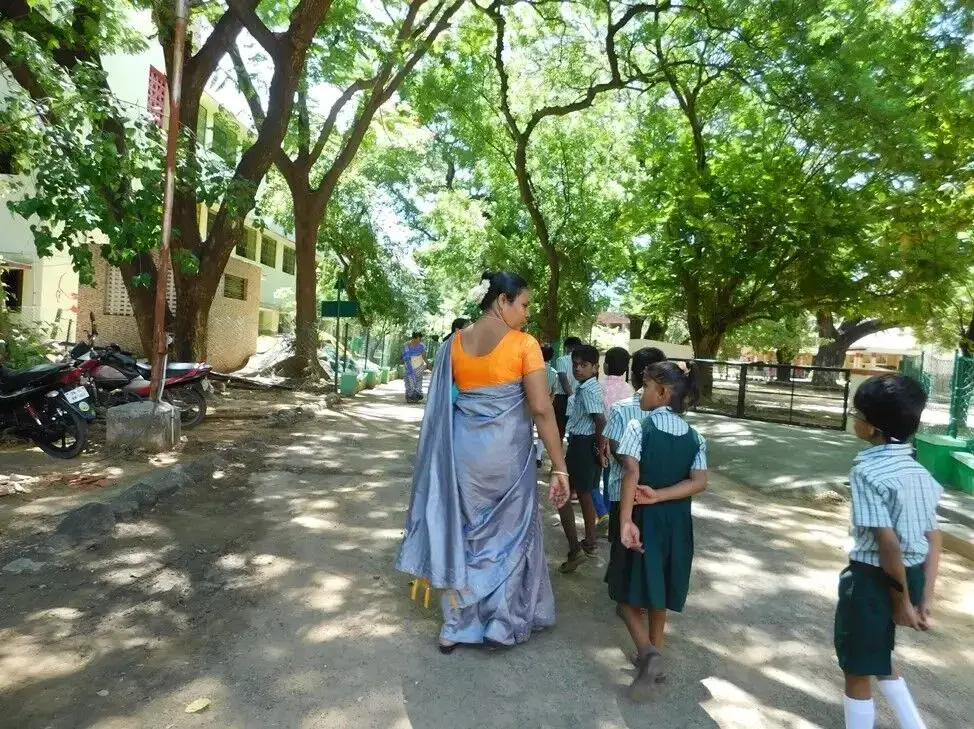
United States: Struggling To Avoid Day Zero
On the other hand, the U.S. has hardly begun to consider green infrastructure in major cities dealing with rapid urbanization.
When it comes to comfort, many Americans are not ready to give up an abundant and accessible lifestyle for a green one. The Office of Water cites getting local communities on board as one of the main struggles in the fight for green infrastructure throughout the country.
“We, as a federal government, don’t prioritize planning as much as we should,” the Office of Water said. “They like to do ribbon cuttings with a big shovel and say this is the Congressman X treatment plant or project.”
While 43 state water managers have been encouraged, required, or incentivized to establish water conservation methods, 19 managers reported that they have not received any funding or resources to develop a water supply plan.
Even considering the different geology across the country, avoiding a Day Zero in the United States is going to require a plan and a sky-high budget.
The GAO has not received a request from Congress to follow up on this report and cannot determine if that is something they will be asked to do in the future.
According to a similar GAO freshwater report published in 2003, 36 water managers anticipated a water crisis somewhere in their state over the next 10 years. At the 10-year mark in 2013, four more managers communicated the same concerns, rounding the concerned group to 40 managers.
“Water issues in the U.S. are so localized. Oftentimes, but not exclusively, in the East and the Southeast the issue is too much water and too short an amount of time, causing lots of flooding issues,” said Steve Morris, the Director of Natural Resources and Environment at the GAO. “Whereas in the West, it’s the exact opposite where they just don’t have a lot of water.”
In 2021, the Biden administration passed the $111 billion Bipartisan Infrastructure Law. Some of its main funding areas includes $55 billion for improved access to clean drinking water for households, businesses, schools and childcare facilities nationwide. The law also allocates more than $50 billion to protect against droughts, heat, floods and wildfires; while another part of the plan earmarks $17 billion for port infrastructure and waterways.
While united, the environmental composition across the states of America represents an array of needs that require varying solutions. For example, San Diego, California has a virtually nonexistent aquifer while the one in Atlantic City, New Jersey runs 800-feet deep.
“The way all of our urban systems are designed is to get the water off the streets as quickly as possible,” EPA’s Office of Water said. “Now, we’re trying to engineer that in many places because we need that water or there’s a water quality aspect to it or there’s a flood aspect to it. It’s basically reengineering all that we’ve engineered over the last 150 years or so.”
The common water treatment method of draining water rather than repurposing it is the main cause of droughts and floods around the country, experts such as Raghaven say. Rain water that is pushed out to sea cannot be repurposed; but rain water that is directed into underground aquifers made of dirt, clay, or sand can replenish the most natural water sources that the earth has to offer.
The method of shoving fresh rainwater to the nearest open body of water is an accommodation to rapid urbanization, or a large influx of people to one area in a short period of time. In the current period of climate change, it is ironic to encounter a crisis caused not by too many people using more natural resources than the land has to offer, but by wasting them entirely.
In order to be effective, any natural infrastructure or climate resilience measure must be tailored to the conditions where they are being installed. Therefore, green changes must have their genesis at the local level.
The time for planning is overdue. 8,383 miles away from the United States, the city of Chennai in Southern India is home to some of the greatest examples of green infrastructure in the world. Ripe with new takes on the urban water system, the city’s success stories can thrive in any landscape.
As 2023 rapidly approaches, it is crucial to reevaluate the state of water in 80 percent of the country. Today, 35 states in the U.S. are experiencing severe to extreme drought according to the National Integrated Drought Information System.
President Biden’s $111 billion Bipartisan Infrastructure Law allocates nearly $10 billion to improve water access and repair aging water infrastructure throughout the country. The funds have already been allocated to 46 projects in several states including Arizona, California, Idaho, Nebraska, Nevada and Wyoming with dam spillway repairs in Kansas, pipeline repairs in Utah and investments in a pumping plant in Montana.
While nature-based solutions must be uniquely designed to fit the locality that they’re being built to serve, rainwater harvesting and closed-loop water systems are more important to American infrastructure than ever before.










